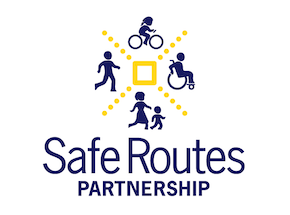Safe Routes to School programs make walking and bicycling to school safer and more accessible for children, including those with disabilities, and increase the number of children who choose to walk and bicycle. Safe Routes to School programs can benefit communities by enhancing children’s health and safety, well-being, and academic performance.
The E-Toolkit is a guiding document for Safe Routes To School Coordinators and educators to use on social media to engage, encourage, and educate students in Oregon through Safe Routes to School programming even while students are not able to physically attend school.
This promotional toolkit can be used to disseminate the report, “One Step Forward, Two Steps Back: COVID-19’s Impact on Youth Physical Activity and Safe Routes to School."
This report illustrates how the Covid-19 pandemic affected the health of youth and their families by impacting their physical activity.
This report includes an analysis of the amounts of funding each state dedicates to walking, bicycling, and Safe Routes to School and the source of these funds. Case studies and suggestions are provided for how states can develop funding streams that are dedicated to walking, bicycling, and/or Safe Routes to School.
Family Walks and family bike rides with route ideas and safety instructions.
The Engineering Solutions Guide for Safe Routes to School covers street design strategies to address traffic safety concerns commonly identified in school areas and along the routes to school.
This guide will equip you with the tools to engage students, families, and staff of all backgrounds in imagining, designing, and building more walkable and roll-able routes to school.
A guide for schools and families to consider and plan for Back to School travel: walking/ped pods, biking/pedal pods, busing, driving.
This project was developed as a part of the Oregon Metro Regional Safe Routes to Schools program. Metro's Safe Routes to Schools (SRTS) program provides resources that help ensure kids and teenagers across the region can safely, affordably, and efficiently access their school and community by walking, rolling, and transit.

